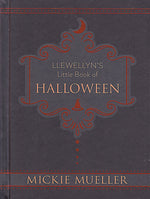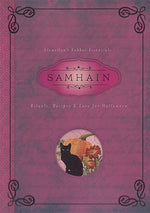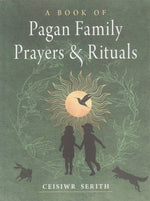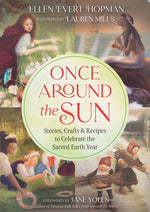Halloween and Pagan Children
Karen Charboneau HarrisonShare
© Copyright 2023 Karen Charboneau-Harrison, All Rights Reserved.
Halloween can sometimes be problematic for Pagans with children. For us, it is one of our most sacred and important holidays, yet we are surrounded by green-faced, cardboard 'witches' hanging over candy displays, plus offensive greeting cards. Story hour at school often involves a scary tale with a 'witch' as a villain and our children receive coloring handouts at school that depict at least one flying, warty 'witch'. It is inappropriate to expect your child to challenge these misrepresentations at school or for you to arrive fuming to confront the teacher or principal. Tempting though it may be to forego public confrontations, the proper response is to deal with these inconsistencies in the privacy of your own home. Tell your children that these images are produced by people who do not really know anything about real Witches and that no hurt or insult is intended. You can also explain how current North American Halloween customs developed in order to show them how other people do celebrate an important holiday with us.
The way I explained it to my daughter is:
Samhain begins the Celtic New Year, the time when 'the veil between the worlds is thin' and we are more sensitive to our inner selves and our psychic senses. Our ancestors who no longer have bodies often return to visit their homes and families at this time and we can communicate with them to help them pass on through to their next life and body, we can learn lessons from them and we can simply enjoy their company. Seasonal celebrations focus on the beginning of the rule of the God, the Lord of the Underworld, and Keeper of the Gates of Death. Our ancestors finished preserving their winter storehouse of food at this time and began the slaughter of animals that would feed them throughout the winter. The types of magick done at this time are for the preservation of our families and friends through the harsh winter months. We also send out energy to protect the wild animals, our winter stores of food and to strengthen the Sun for his rebirth at Yule.
The rest of the United States is celebrating Halloween with costumes and candy - both of which are fun for children. This custom comes from older traditions of our ancestors and is a wholesome way to let your children be a part of the larger community as it celebrates, perhaps unknown to them, a Pagan festival. In addition, here are some suggestions for Samhain celebrations that can include children:
Maybe it's just because it's my birthday, but to me Halloween/Samhain is one of the most fun holidays of the year. It's serious but fun and rich in lore and practices. Take advantage of all of the fascinating Halloween customs to introduce your children to your spiritual world view and share the magick with them!
| Recommended Products | |
 Llewellyn's Little Book of Halloween Llewellyn's Little Book of Halloween |
 Samhain Samhain |
 Book of Pagan Family Prayers and Rituals Book of Pagan Family Prayers and Rituals |
 Once Around the Sun Once Around the Sun |
